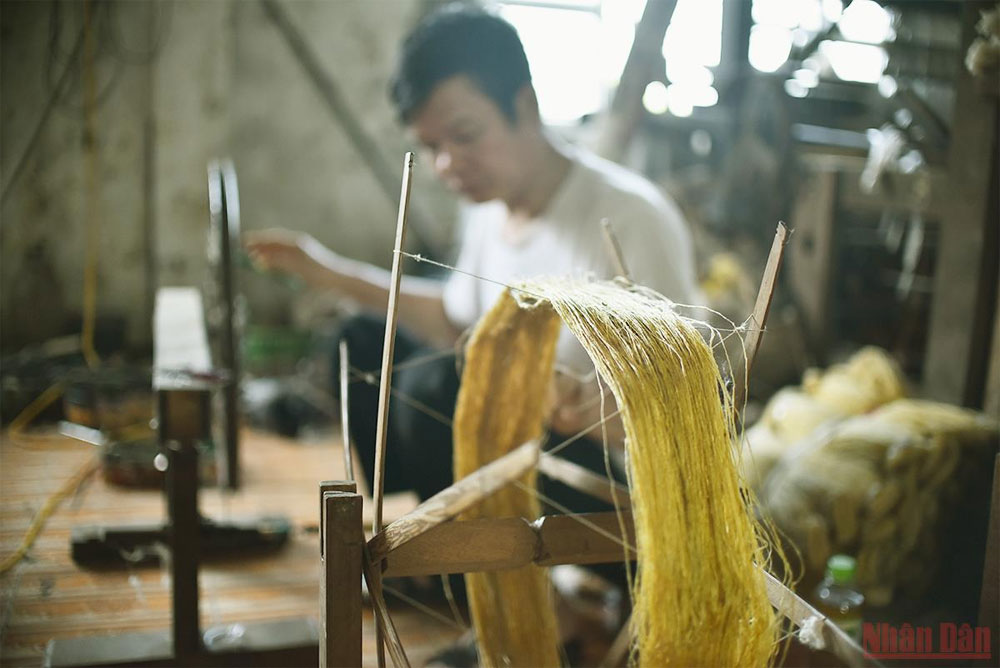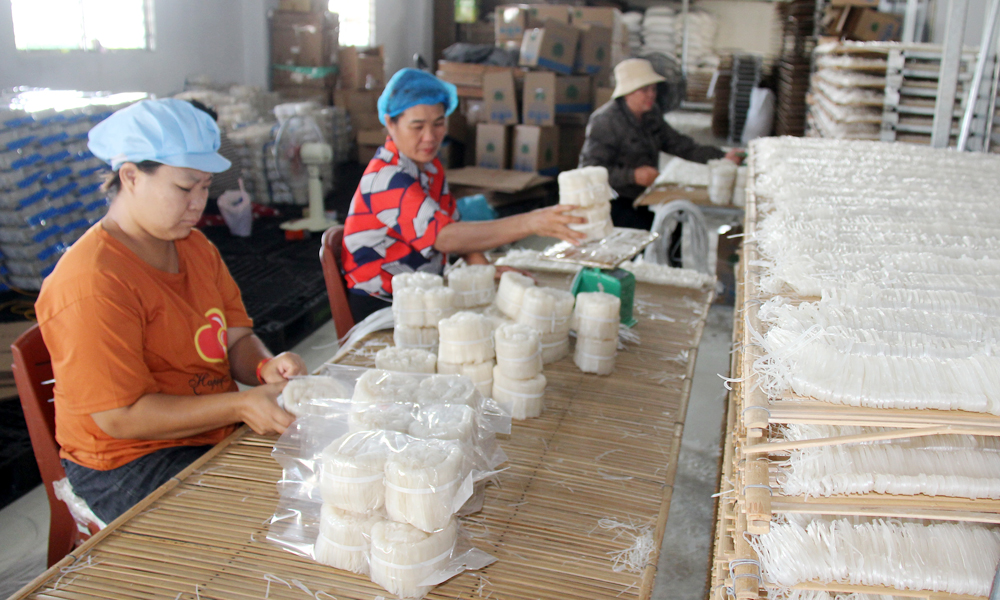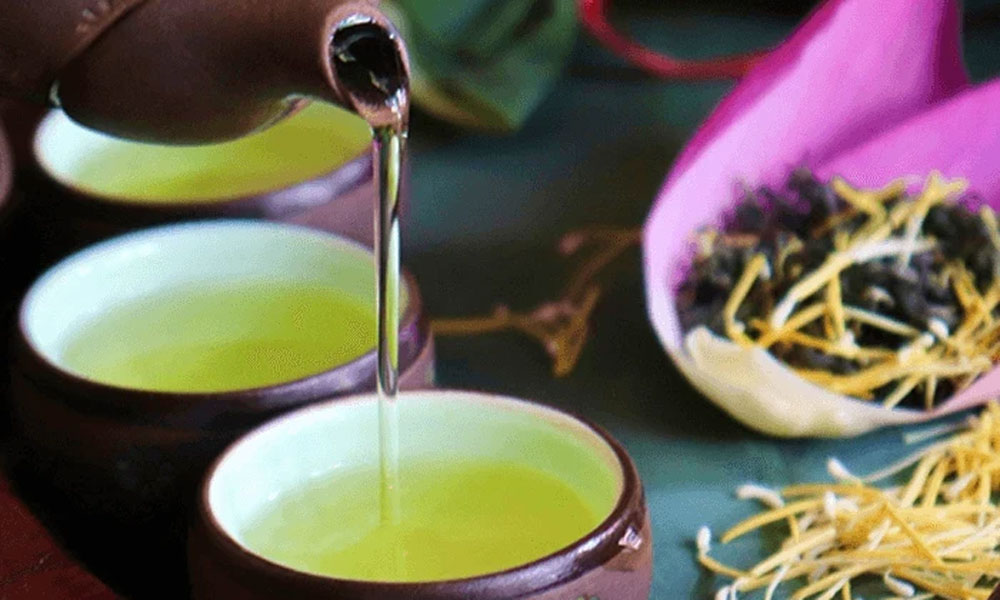Traditional silk weaving craft preserved
Born to a farming family, from the age of 6, Phan Thi Thuan was taught by her mother about how to grow mulberries and raise silkworms. Today, at the age of 70, an age when many people in the commune just want to rest, artisan Thuan still refuses to leave the silkworms and their golden cocoons.
 |
|
Golden silk cocoons. |
Phung Xa Commune was once famous as the "mulberry capital" of the North in the 70s, with thousands of hectares of mulberry land stretches along the flow of the lush Day River under the nurturing hands of most people in the communes in My Duc District. By 1884, mulberry farming and silkworm raising was no longer "popular", people changed their production to rice farming for a living and gradually began to forget about the traditional craft.
Worried about the traditional craft and the risk of losing the traditional historical cultural feature of a long time, along with compassion for the status of silkworm, Thuan quietly gradually worked hard to restore mulberry farming, silkworm raising, silk nursery, and silk weaving. Since then, the traditional craft has gradually been revived in the homeland of Phung Xa.
 |
|
The worker spins the yarn from the silk cocoons. |
From silk products woven elaborately and sophisticatedly by people's hands, Thuan has created more special and unique fabrics produced by the "workers" of silkworms. Usually, in the fall, a silkworm contains about 400-450 metres of silk in its abdomen. In the summer, the silkworms contain about 300 metres of silk. The flat white sheets are the place for thousands and tens of thousands of silkworms to diligently release silk, weaving flat golden and durable cocoons.
The golden silk sheets will become white cotton sheets, soft and mellow to the touch.
The method of raising silkworms into "weavers" contributes to saving many stages compared to the old traditional way. The flat cocoons made by silkworms themselves also have a strong natural cohesion, and are loved and welcomed by a large number of consumers around the world, from Asian countries such as Japan, Thailand, and China, to Germany, Belgium, Saudi Arabia.
Another sophisticated and high-value silk product associated with artisan Phan Thi Thuan's name is lotus silk. A lotus silk scarf is woven from 4,800 lotus stalks and takes more than a month to complete. Each thread of lotus silk is thin and easy to break, requiring workers to be highly dedicated. The process of creating lotus silk is completely handmade, manipulated in a sophisticated and meticulous way, so lotus silk products are often very expensive.
After many failures, the lotus silk fabrics are gradually perfected, not only light and airy, but also subtly the fragrance of this elegant flower in each silk thread.
 |
|
Artisan Phan Thi Thuan. |
In addition to the efforts to disseminate knowledge and new techniques in the craft to the people in the commune, so that each household can create a stable economy, artisan Phan Thi Thuan also always looks forward with the desire to "spread the fire of the craft" to passionate young people. Each lotus silk product is studied and practiced skillfully and diligently by young people.
Not only helping people in the commune to have a stable income from silk making, artisan Phan Thi Thuan is always worried about a dream of raising the traditional craft, making Phung Xa silk products a national pride. With unremitting efforts, artisan Phan Thi Thuan gradually became a passionate fan, giving impetus to future generations of silk-making.
Preseving the craft to future generations of silk-making is something that artisan Phan Thi Thuan always keeps in mind when producing every piece of fabric.
Source: NDO
 Bắc giang
Bắc giang














Reader's comments (0)